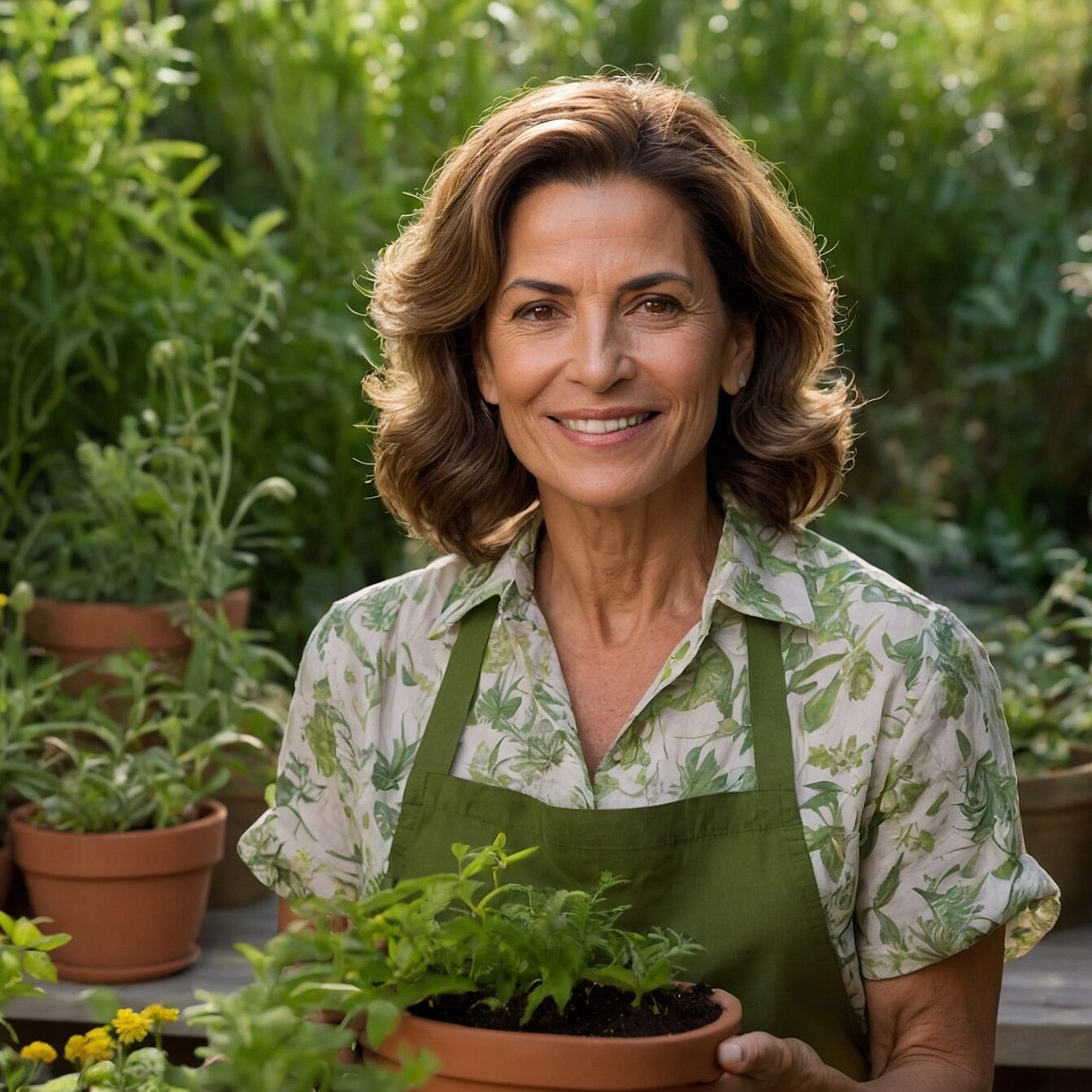índice
Introduction
The Heart Necklace (Crassula pellucida), also known as “Pearl Necklace” or “Rosary”, is a charming succulent that captivates plant lovers with its leaves in the shape of little hearts. Originally from South Africa, this easy-to-grow plant stands out for its graceful appearance, forming delicate hanging green necklaces that add a unique touch to any room.
Meaning of the Heart Necklace
In addition to its aesthetic beauty, the Heart Necklace carries symbolic meanings. In the language of flowers, it is often associated with feelings of love and affection, representing an emotional connection. In addition, popular belief suggests that having this succulent in the house brings prosperity and good luck. Growing the Heart Necklace not only visually enriches your space, but also adds a special touch of meaning and positivity to your home.
| Common Name | Heart Necklace |
| Botanical Name | Crassula pellucida |
| Family | Crassulaceae |
| Plant Type | Succulent |
| Adult Size | Up to 20 cm tall |
| Sun exposure | Sun to half shade |
| Soil type | Well-drained, sandy |
| soil pH | Neutral to slightly acidic |
| Flowering Season | Spring and summer |
| Flower color | White to pink |
| Native Area | South Africa |
| Toxicity | Non-toxic |
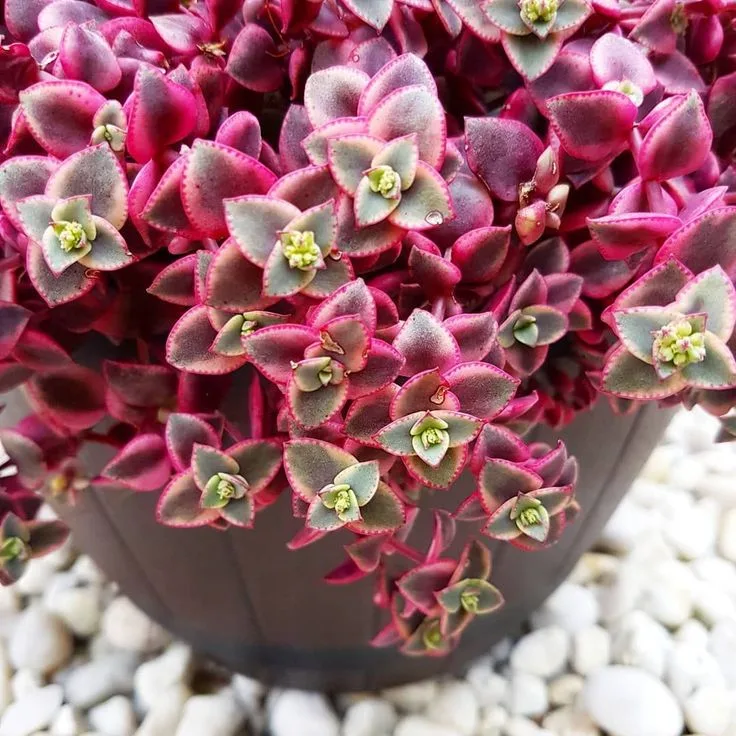
How to care for the Heart Necklace
Caring for Crassula pellucida requires attention to several aspects to ensure its healthy and exuberant development. Here are the essential guidelines:
Light:
Keep the plant in a place with adequate lighting, preferably indirect light. Avoid direct exposure to intense sunlight for long periods, as this can damage the leaves.
Soil:
Opt for a well-drained substrate. Specific mixtures for succulents work well. This avoids excessive water accumulation, preventing problems such as root rot.
Water:
Water sparingly, allowing the soil to dry out between waterings. Avoid overwatering, as succulents are sensitive to waterlogging.
Temperature and humidity:
This succulent thrives in moderate temperatures. Avoid exposure to frost. As for humidity, it doesn’t require high levels, being adapted to drier environments.
Fertilizing:
Fertilize the plant in spring and summer, using a balanced fertilizer for succulents. Follow the instructions on the product to avoid excesses that could harm the plant.
By following these guidelines, you will provide the ideal conditions for the Heart Necklace to reveal all its charm in your space.
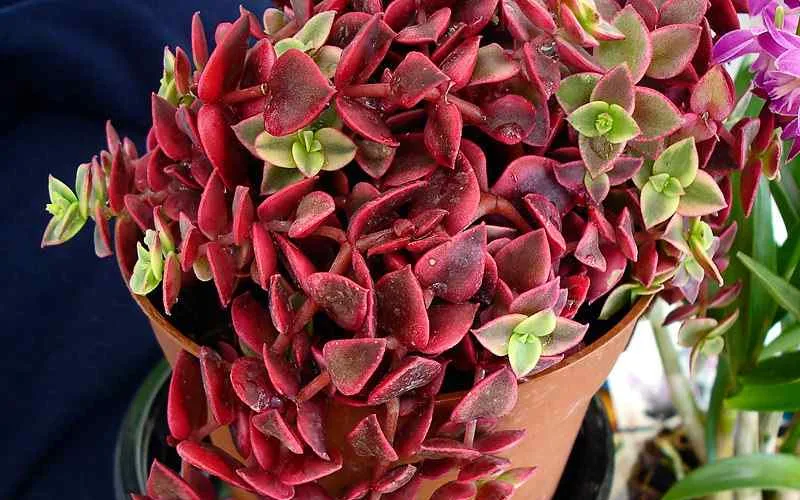
How to make a Hearts Necklace seedling
If you want to multiply the charm of Crassula pellucida, propagation by cuttings is a rewarding option. Follow these simple steps:
Preparation:
- Choose a healthy mother plant.
- Prepare a well-drained substrate.
Leaf removal:
- Gently detach the healthy leaves from the plant.
- Make sure to include the base of each leaf.
Healing:
- Leave the leaves to heal for 1-2 days in a shaded place.
- This reduces the risk of infection when planting.
How to plant the Heart Necklace
Planting:
- Lightly sink the base of each leaf into the substrate.
- Keep the soil moist, not soggy.
Initial care:
- Place the seedlings in indirect light.
- Water moderately to stimulate rooting.
By following these steps, you will soon have healthy Heart Necklace cuttings, expanding the beauty of this unique succulent in your garden.
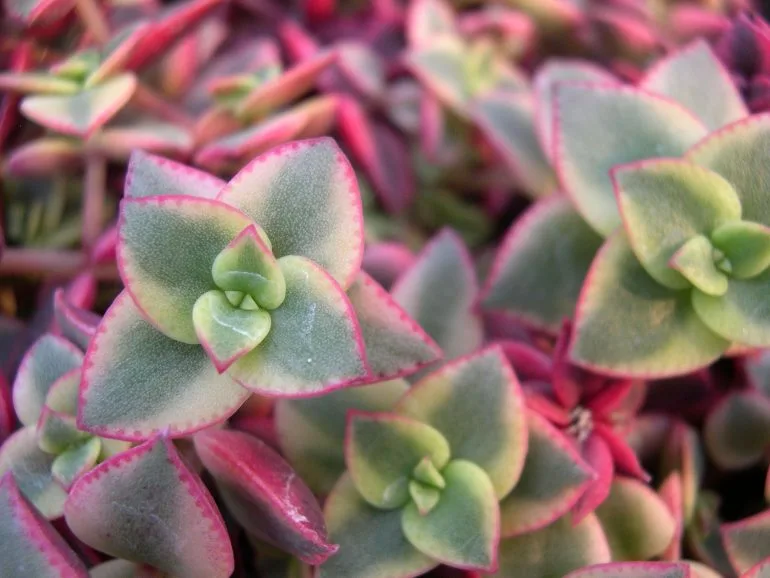
Pests and diseases
When growing Crassula pellucida, it’s important to be aware of the possible challenges that can arise. Here are some common pests and diseases:
Pests:
- Mites: Identifiable by fine webs on the leaves.
- Mealybugs: Small insects that attach themselves to the leaves, sucking out the sap.
- Slugs and snails: Can feed on the leaves.
Diseases:
- Root rot: The result of excess moisture in the soil.
- Leaf spots: Caused by excessive humidity or splashing water on the leaves.
Common Problems and Their Solutions
Problem: Withered leaves
- Cause: Too little water.
- Solution: Adjust watering frequency.
Problem: Yellowing leaves
- Cause: Too much water.
- Solution: Reduce watering and improve soil drainage.
Problem: Dark spots on the leaves
- Cause: Excessive sun exposure.
- Solution: Move the plant to a place with indirect light.
Problem: Slow growth
- Cause: Lack of nutrients.
- Solution: Fertilize in spring and summer.
By identifying and treating these problems promptly, you’ll keep your Crassula pellucida vibrant and healthy.
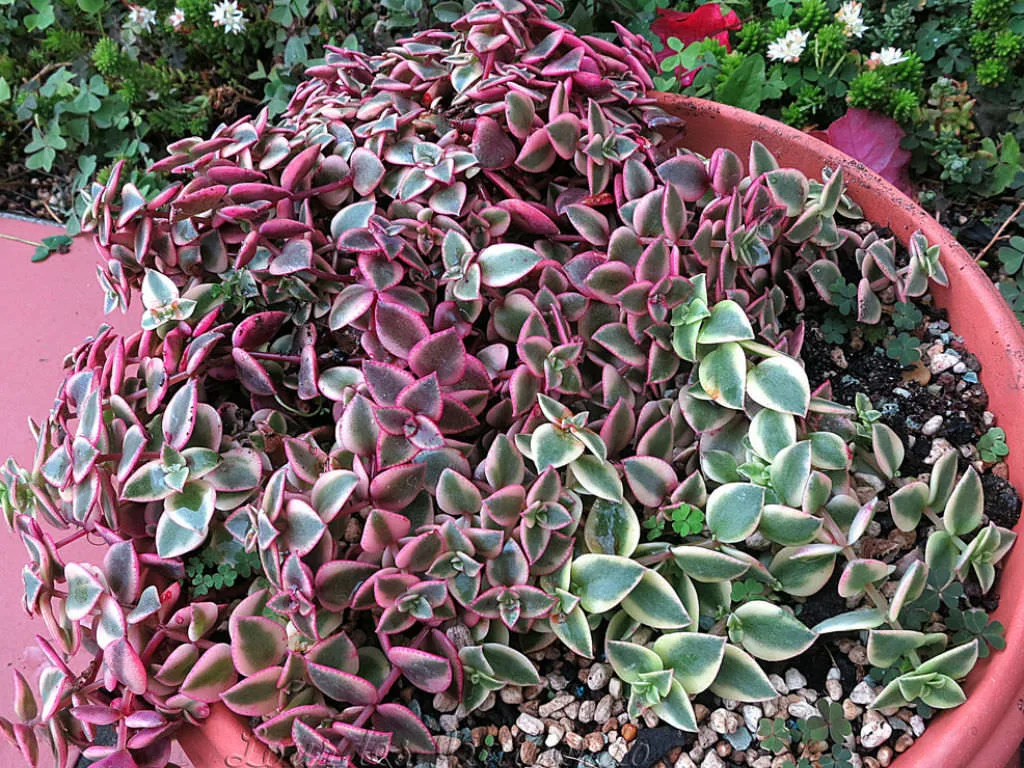
Curiosities and myths
Discover fascinating facts about the Heart Necklace that add an intriguing touch to your growing experience:
Curiosities:
- African origin: This succulent is native to the African continent, especially in the hotter, more arid regions.
- Longevity: The Heart Necklace can live for many years, adding a lasting touch to your garden.
- Unique Varieties: There are several varieties of this plant, featuring nuances in the color and shape of the leaves.
Myths:
- Attracting Prosperity: Some cultures believe that having a Heart Necklace in the house brings prosperity and good luck.
- Difficult to maintain: Despite its delicate appearance, this succulent is hardy and easy to maintain, debunking the idea that it is a demanding plant.
By exploring these curiosities and dispelling myths, you’ll connect even more with the unique charm of the Heart Necklace.
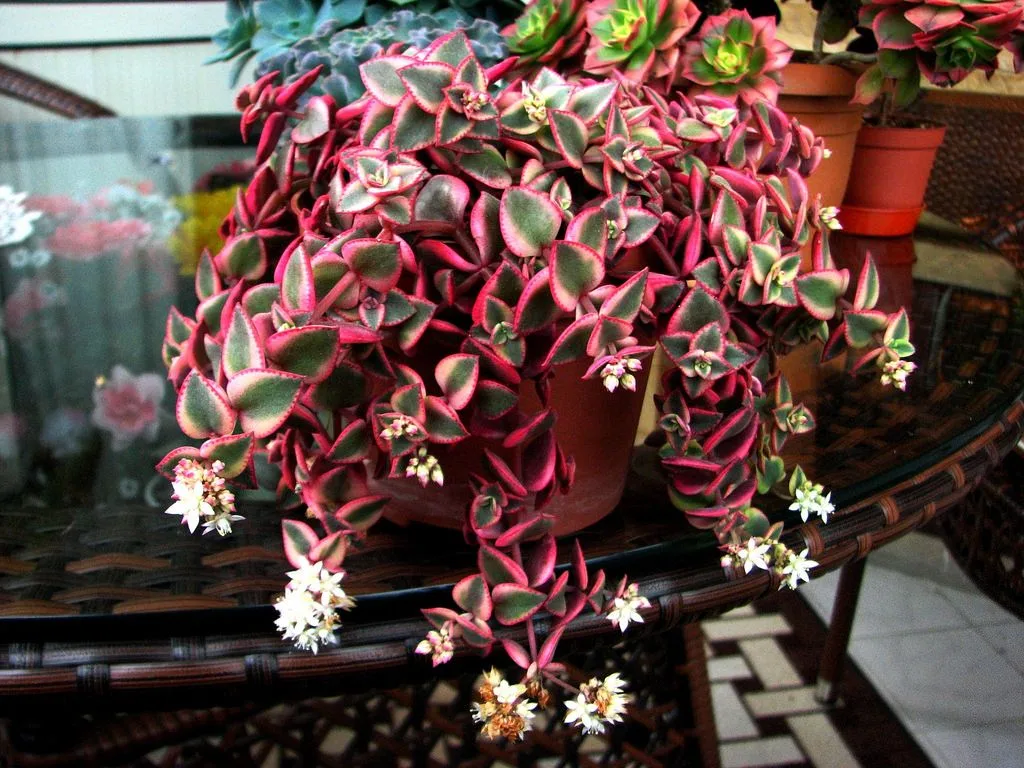
Conclusion
In this dive into the universe of the Heart Necklace, we’ve explored everything from its African origins to the myths surrounding it, revealing a little more about this enchanting succulent. Its heart-shaped leaves not only add a unique aesthetic touch, but also carry symbolic meanings, making it a special addition to any green space.
By understanding the nuances of care, propagation and coping with common challenges, you are prepared to grow the Heart Necklace with confidence. Whether it’s attracting prosperity, uncovering curiosities or debunking myths, this plant reveals an enduring charm that transcends garden boundaries, adding a touch of beauty and positivity to your life. Cultivate, admire and allow the Heart Necklace to flourish like a true botanical jewel in your home.
Frequently Asked Questions
How to care for the Heart Necklace plant?
Caring for the Heart Necklace involves paying attention to several aspects. Provide indirect light in full sun, adjusting as necessary. Use a well-drained substrate, allowing the roots to breathe. Avoid extreme temperatures and protect the plant from frost. Fertilize moderately during spring and summer. Watch out for pests such as spider mites and mealybugs. By balancing light, soil, water and protection against pests, you can guarantee a healthy and lush cultivation of the Heart Necklace.
How to water Heart Necklaces?
Watering the Heart Necklace requires a balanced approach. This succulent prefers slightly damp soil, but does not tolerate waterlogging. Apply water when the soil is dry to the touch, avoiding excessive moisture accumulation. Monitoring the frequency of watering based on weather conditions and the indoor environment is crucial to maintaining the plant’s health.
